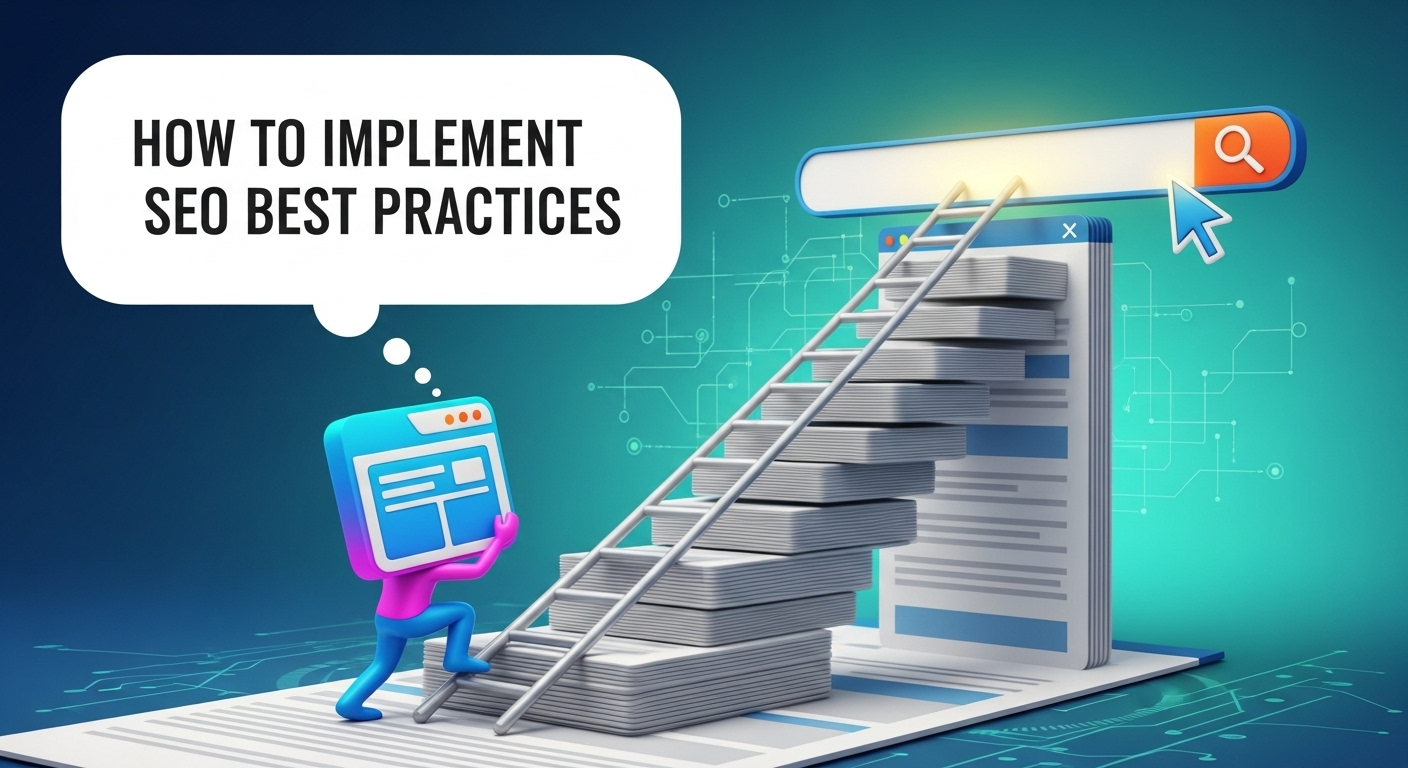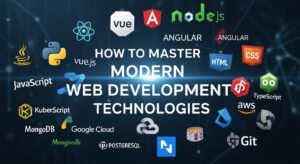When it comes to mastering digital marketing, understanding SEO best practices is absolutely crucial for any website owner or marketer who wants to achieve sustainable online success. Search engine optimization has evolved dramatically over the years, and implementing the right strategies can make the difference between obscurity and visibility in search results.
What specific challenges are you currently facing with your website’s search engine performance? Are you struggling with low organic traffic, poor keyword rankings, or perhaps you’re unsure where to start with SEO implementation?
Understanding the Foundation of Modern SEO Best Practices
Before diving into specific tactics, it’s important to grasp what makes SEO best practices effective in today’s digital landscape. Search engines like Google have become increasingly sophisticated, focusing on user experience, content quality, and technical performance.
The core principle behind successful SEO best practices revolves around creating valuable content that genuinely serves your audience while making it easy for search engines to understand and index your pages. This dual focus ensures that your optimization efforts align with both user needs and search engine requirements.
Consider this: when you search for something online, what makes you click on one result over another? The answer often lies in how well that result appears to match your intent and solve your problem.
Keyword Research: The Cornerstone of Effective SEO Best Practices
Implementing SEO best practices begins with thorough keyword research. This process involves identifying the specific terms and phrases your target audience uses when searching for products, services, or information related to your industry.
Strategic Keyword Selection Process
Effective keyword research follows a systematic approach. Start by brainstorming seed keywords related to your business, then use tools like Google Keyword Planner, Ahrefs, or SEMrush to expand your list and analyze search volumes, competition levels, and user intent.
Focus on identifying three types of keywords:
- Primary keywords represent your main topics and typically have higher search volumes but more competition.
- Long-tail keywords are more specific phrases that often convert better due to clearer user intent.
- LSI (Latically Semantic Indexing) keywords are related terms that help search engines understand your content’s context and relevance.
What kind of keywords do you think would be most valuable for your specific industry or niche?
On-Page SEO Best Practices for Maximum Impact
On-page optimization represents the most direct way to implement SEO best practices on your website. These techniques involve optimizing individual pages to rank higher and earn more relevant traffic.
- Title Tag Optimization: Your title tag serves as the clickable headline in search results and plays a crucial role in both rankings and click-through rates. Effective SEO best practices for title tags include placing your focus keyword near the beginning, keeping titles under 60 characters, and creating compelling copy that encourages clicks.
- Meta Description Excellence: While meta descriptions don’t directly impact rankings, they significantly influence click-through rates. Craft descriptions between 150-160 characters that accurately summarize your content while incorporating your target keywords naturally.
- Header Structure and Keyword Integration: Proper header structure (H1, H2, H3, etc.) helps both users and search engines understand your content hierarchy. Your H1 should include your focus keyword and clearly indicate the page’s main topic. Subsequent headers should logically organize your content while incorporating related keywords where appropriate.
How are you currently structuring your content headings? Do you have a clear hierarchy that guides readers through your information?
Technical SEO Best Practices That Drive Results
Technical SEO forms the foundation that supports all other optimization efforts. Without proper technical implementation, even the best content and keyword strategies may fail to achieve their potential.
- Site Speed Optimization: Page loading speed directly impacts both user experience and search rankings. Google’s PageSpeed Insights provides detailed analysis and recommendations for improving your site’s performance. Key factors include optimizing images, minimizing CSS and JavaScript files, leveraging browser caching, and choosing reliable hosting providers.
- Mobile-First Indexing Compliance: With Google’s mobile-first indexing, your website’s mobile version becomes the primary factor for ranking decisions. Ensure your site uses responsive design, loads quickly on mobile devices, and provides an excellent user experience across all screen sizes.
- URL Structure and Internal Linking: Clean, descriptive URLs help both users and search engines understand your page content. Include your target keywords in URLs while keeping them concise and readable. Internal linking distributes page authority throughout your site and helps establish content relationships.
Content Creation Strategies Within SEO Best Practices
Creating high-quality, valuable content remains central to successful SEO implementation. Search engines prioritize content that genuinely helps users solve problems, answer questions, or learn new information.
Content Depth and Comprehensiveness
Comprehensive content that thoroughly covers topics tends to perform better in search results. This doesn’t mean unnecessarily long content, but rather ensuring you address user questions and provide actionable insights.
Consider creating content that serves as the definitive resource on specific topics within your industry. What questions do your customers frequently ask that you could answer comprehensively?
Keyword Density and Natural Integration
While keyword stuffing can harm your rankings, strategic keyword placement remains important. Aim for approximately 1% keyword density while ensuring your content reads naturally. Include your focus keyword in the introduction, several subheadings, and throughout the body content where it fits contextually.
Content Freshness and Updates
Regularly updating existing content signals to search engines that your information remains current and relevant. Backlinko’s research shows that fresh content can positively impact rankings, especially for time-sensitive topics.
Content Type | Update Frequency | SEO Impact |
Blog Posts | Monthly reviews | High |
Product Pages | As needed | Very High |
Resource Guides | Quarterly | High |
News Articles | As events occur | Medium |
Link Building as Part of Comprehensive SEO Best Practices
Link building remains a critical component of SEO success, though approaches have evolved significantly. Modern link building focuses on earning high-quality, relevant backlinks through valuable content and relationship building.
Internal Link Strategy
Strategic internal linking helps distribute page authority and guides users through your content. Link to relevant pages using descriptive anchor text that includes target keywords when appropriate. This practice supports both SEO and user experience objectives.
External Link Acquisition
Focus on earning links from authoritative websites in your industry. Effective strategies include creating linkable assets like original research, comprehensive guides, or useful tools. Moz’s Link Explorer can help you analyze your current link profile and identify opportunities.
Building relationships with industry influencers, contributing guest posts to reputable publications, and participating in relevant online communities can generate natural backlink opportunities.
What types of content assets could you create that other websites would want to link to?
Local SEO Best Practices for Geographic Targeting
If your business serves local customers, implementing local SEO best practices becomes essential for visibility in geographic-specific searches.
- Google Business Profile Optimization: Complete and optimize your Google Business Profile with accurate information, high-quality photos, and regular updates. Encourage satisfied customers to leave reviews and respond professionally to all feedback.
- Local Citation Building: Consistent NAP (Name, Address, Phone) information across online directories helps establish local authority. Focus on major directories like Yelp, Yellow Pages, and industry-specific platforms.
Measuring and Monitoring SEO Performance
Implementing SEO best practices requires ongoing monitoring and adjustment based on performance data. Key metrics include organic traffic growth, keyword ranking improvements, click-through rates, and conversion rates from organic search.
Essential SEO Tools and Analytics
Google Analytics 4 provides comprehensive insights into organic traffic patterns and user behavior. Google Search Console offers direct feedback from Google about your site’s performance and technical issues.
Set up regular reporting to track your progress and identify areas needing improvement. What specific metrics would be most valuable for measuring your SEO success?
Advanced SEO Best Practices for Competitive Advantages
As your SEO foundation strengthens, consider implementing advanced strategies that can provide additional competitive advantages.
- Schema Markup Implementation: Structured data helps search engines understand your content better and can enable rich snippets in search results. Implement relevant schema markup for your content types, such as articles, products, reviews, or local business information.
- Featured Snippet Optimization: Optimize content to appear in featured snippets by providing clear, concise answers to common questions. Use bullet points, numbered lists, and table formats that search engines can easily extract and display.
- Voice Search Optimization: With increasing voice search usage, optimize for conversational queries and question-based keywords. Create content that answers specific questions users might ask voice assistants.
Common SEO Mistakes to Avoid
Understanding what not to do can be as important as knowing correct SEO best practices. Common mistakes include keyword stuffing, ignoring mobile optimization, neglecting site speed, using duplicate content, and focusing solely on search engines rather than user experience.
Avoid shortcuts or “black hat” techniques that might provide temporary gains but risk long-term penalties. Search engines continuously refine their algorithms to reward authentic, valuable content and penalize manipulative practices.
Creating Your SEO Implementation Plan
Successfully implementing SEO best practices requires a structured approach. Start by auditing your current website performance, identifying priority areas for improvement, and creating a timeline for implementation.
Consider your available resources, technical capabilities, and business objectives when prioritizing SEO initiatives. Some improvements, like content optimization, can be implemented immediately, while technical changes might require developer assistance.
What would you identify as the top three priorities for your SEO implementation based on your current situation?
Staying Current with SEO Evolution
SEO best practices continue evolving as search engines update their algorithms and user behaviors change. Stay informed through reputable SEO publications like Search Engine Journal, Search Engine Land, and official Google resources.
Regular learning and adaptation ensure your SEO strategies remain effective and aligned with current best practices. The investment in ongoing SEO education pays dividends through sustained organic visibility and traffic growth.
Your Path Forward with SEO Best Practices
Implementing comprehensive SEO best practices requires patience, consistency, and ongoing refinement. Success comes from focusing on user value while following technical best practices that help search engines understand and rank your content appropriately.
Start with fundamental optimizations like keyword research, on-page optimization, and technical improvements. As you build momentum and see results, expand into more advanced strategies and specialized techniques relevant to your industry.
SEO is a long-term strategy that builds cumulative benefits over time. The SEO best practices you implement today create the foundation for sustained organic growth and competitive advantage in your market.
What’s your next step in implementing these SEO best practices for your website?











